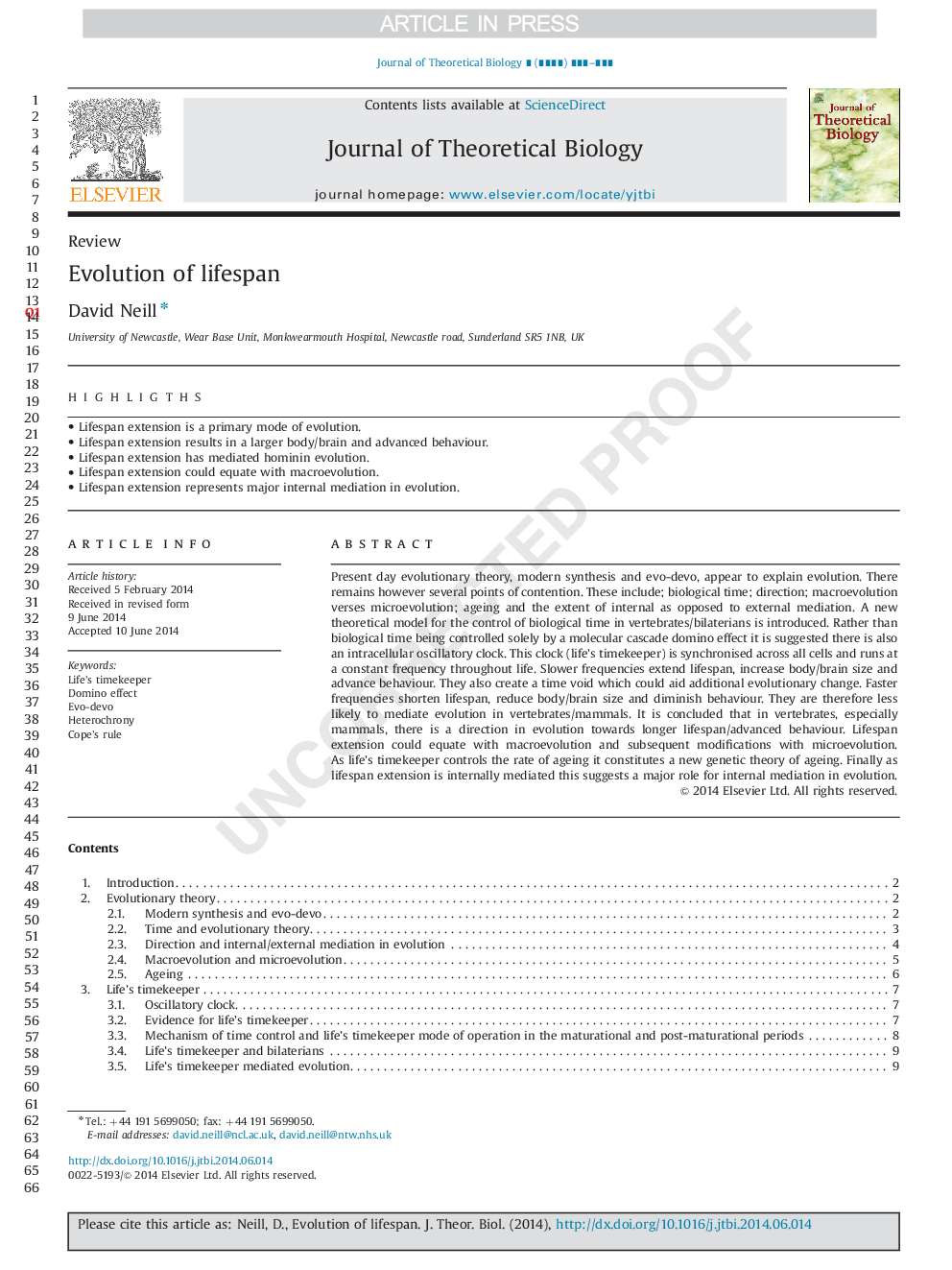| کد مقاله | کد نشریه | سال انتشار | مقاله انگلیسی | نسخه تمام متن |
|---|---|---|---|---|
| 6370553 | 1623852 | 2014 | 14 صفحه PDF | دانلود رایگان |
عنوان انگلیسی مقاله ISI
Evolution of lifespan
ترجمه فارسی عنوان
تکامل طول عمر
دانلود مقاله + سفارش ترجمه
دانلود مقاله ISI انگلیسی
رایگان برای ایرانیان
موضوعات مرتبط
علوم زیستی و بیوفناوری
علوم کشاورزی و بیولوژیک
علوم کشاورزی و بیولوژیک (عمومی)
چکیده انگلیسی
Present-day evolutionary theory, modern synthesis and evo-devo, appear to explain evolution. There remain however several points of contention. These include: biological time, direction, macroevolution verses microevolution, ageing and the extent of internal as opposed to external mediation. A new theoretical model for the control of biological time in vertebrates/bilaterians is introduced. Rather than biological time being controlled solely by a molecular cascade domino effect, it is suggested there is also an intracellular oscillatory clock. This clock (life׳s timekeeper) is synchronised across all cells in an organism and runs at a constant frequency throughout life. Slower frequencies extend lifespan, increase body/brain size and advance behaviour. They also create a time void which could aid additional evolutionary change. Faster frequencies shorten lifespan, reduce body/brain size and diminish behaviour. They are therefore less likely to mediate evolution in vertebrates/mammals. It is concluded that in vertebrates, especially mammals, there is a direction in evolution towards longer lifespan/advanced behaviour. Lifespan extension could equate with macroevolution and subsequent modifications with microevolution. As life׳s timekeeper controls the rate of ageing it constitutes a new genetic theory of ageing. Finally, as lifespan extension is internally mediated, this suggests a major role for internal mediation in evolution.
ناشر
Database: Elsevier - ScienceDirect (ساینس دایرکت)
Journal: Journal of Theoretical Biology - Volume 358, 7 October 2014, Pages 232-245
Journal: Journal of Theoretical Biology - Volume 358, 7 October 2014, Pages 232-245
نویسندگان
David Neill,
